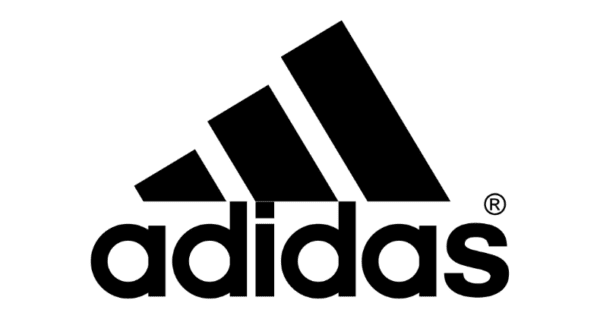| Type | Description | Contributor | Date |
|---|---|---|---|
| Post created | Pocketful Team | Oct-03-24 |

- Blog
- adidas case study
Adidas Case Study: Business Model and Pricing Strategies

Each individual needs to exercise to stay healthy, and if you’re a health nut, then you must be spending a lot of time in the gym. However, comfortable exercise gear is essential, and “Adidas” is one of the first names that pop up when someone talks about sports shoes. Do you know the history of Adidas, one of the most popular shoe brands in the world?
In this blog, we’ll discuss Adidas and show you how it went from being a shoe producer to becoming the most popular sportswear brand worldwide.
Company Overview: Adidas

Adolf and his brother Rudolf Dassler created the Adidas company in 1924 under the name “Dassler Brothers Shoe Factory.” At first, the company’s primary concentration was on producing athletic footwear. In 1949, a dispute between the brothers resulted in the division of the business. Adolf Dassler went on to create Adidas, while his brother Rudolf founded Puma. Adidas shoes became popular when the German team wore them with screw-in studs and won the 1954 Football World Cup. This helped Adidas become a household name. The business became well-known over time when it was chosen as the official footwear partner of the World Cups. Due to fierce competition from Nike in the 1990s, the brand began producing fashion-oriented footwear and sportswear. The corporation has made several significant acquisitions, but the acquisition of Reebok in 2005 is seen as one of the most important ones since it allowed Adidas to compete with Nike and grow their market share in North America. The company established a digital presence and introduced a range of environmentally friendly products manufactured from recycled materials. The firm sold the Reebok brand in 2021 and started concentrating on its leading Adidas brand due to the COVID-19 pandemic and the tough economic conditions.
Read Also: Zara Case Study: Business Model and Pricing Strategies
Business Model of Adidas
Adidas’s business Model is essential to its success. The following are the main components of their business model:-
- Sponsorships – The company’s brand visibility is enhanced by sponsoring significant global events, such as FIFA and the Olympics.
- Endorsements – The company endorses athletes like Mohamed Salah and Lionel Messi, which helps increase the popularity of the brand.
- Collaborations – Adidas collaborates with influencers, artists, and celebrities, including David Beckham and Kayne West, to promote its brand.
- Digital Marketing – The business uses a variety of hashtags and social media ads to promote its brand.
- Event Marketing – Adidas also organizes events in many cities around the globe to engage with its target audience and increase brand awareness.
- Customer Loyalty Program – This is another incredibly distinctive aspect of the business, whereby it uses several loyalty programs to reward its devoted customers.
Pricing Policy of Adidas
The company gains market share by utilizing a dynamic pricing strategy. Here is a summary of Adidas’ pricing strategy.-
- Limited Edition – Adidas releases limited edition products in collaboration with different celebrities, which generates hype in the market.
- Innovative Products – The business also specializes in high-performance footwear that uses cutting-edge technologies, such as 4D printing technology, etc. However, these products are expensive.
- Value Pricing – The company also offers value-for-money products to draw mid-range customers and expand its market share.
- Seasonal Discount – Adidas uses promotional offers, stock clearance deals, and seasonal reductions to move out of its inventory.
- Geographical Pricing – The company’s pricing strategy varies depending on the location. For instance, prices in developed countries will be greater than in less developed countries.
- Pricing Segment – Adidas categorizes its products into entry-level, mid-range, and luxury segments.
Conclusion
In conclusion, Adidas is one of the most popular shoe brands in the world. Adidas started operations as the “Dassler Brothers Shoe Factory” and was later renamed Adidas by Adolf Dassler. The company is known all over the world for its athletic apparel and sports footwear. As the leader in the athletic footwear industry, the firm maintains its position by using strategic pricing and marketing approaches. The business has also shifted to manufacturing products using eco-friendly and sustainable items.
Frequently Asked Questions (FAQs)
Where is the headquarters of Adidas?
Adidas’ headquarters is in Bavaria, Germany.
What is the full form of Adidas and its slogan?
Adolf Dassler was also known by the nickname Adi Dassler, which he combined to form Adidas. The company’s motto is “Impossible is Nothing.”
Who is the CEO of Adidas?
Bjorn Gulden is the CEO of Adidas as of 28 September 2024.
Does Adidas own Reebok?
Adidas acquired Reebok in 2005 but later sold it again in 2021.
When did Adidas start its business in India?
Adidas started its business in India in 1996.
Disclaimer
The securities, funds, and strategies discussed in this blog are provided for informational purposes only. They do not represent endorsements or recommendations. Investors should conduct their own research and seek professional advice before making any investment decisions.